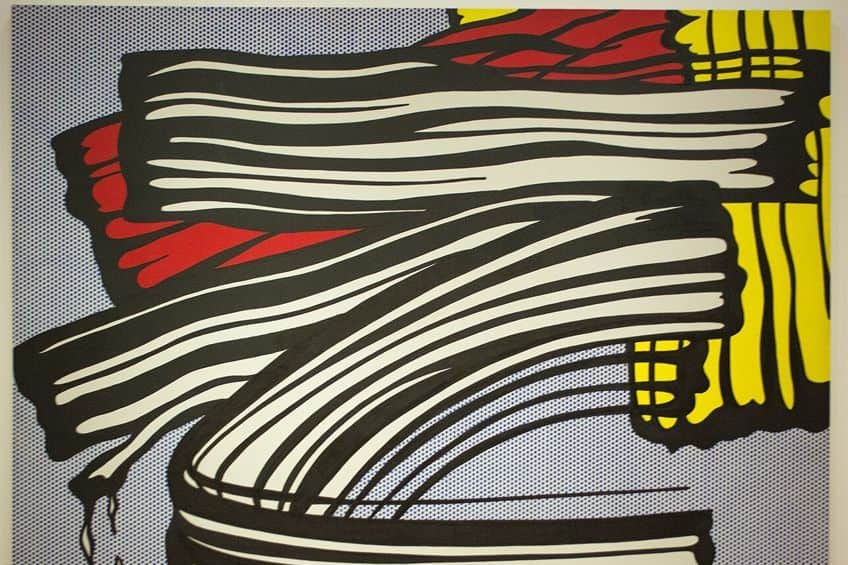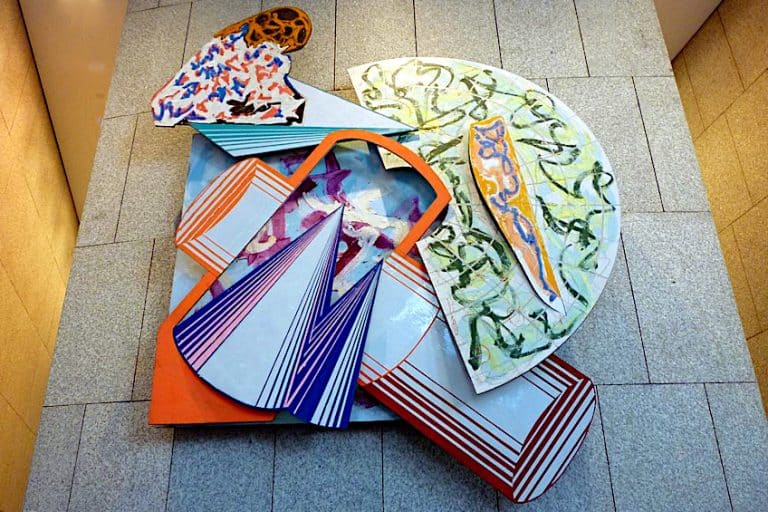Silkscreen Artists and Paintings – What Is Silkscreen Art?
Silkscreen art is one of the most creative painting techniques employed by many great artists. The medium was first developed in the early 20th century and was primarily used in advertising and display works. Since then, the medium has been adopted by many fine artists who have leveraged the art of serigraphy to create some of the most vibrant, multi-layered, and conceptually-profound artworks. In this article, we will take a look at some of the most popular silkscreen artists and their paintings that showcase the different ways silkscreen printing can be used.
Table of Contents
- 1 A Brief History of the Art of Silkscreen Printing
- 2 The Top 10 Most Famous Silkscreen Artists and Paintings
- 2.1 Corita Kent (1918 – 1986)
- 2.2 Roy Lichtenstein (1923 – 1997)
- 2.3 Fernando de Szyszlo (1925 – 2017)
- 2.4 Andy Warhol (1928 – 1987)
- 2.5 Bridget Louise Riley (1931 – Present)
- 2.6 Peter Blake (1932 – Present)
- 2.7 Gerhard Richter (1932 – Present)
- 2.8 Roger Shimomura (1939 – Present)
- 2.9 Mikalojus Vilutis (1944 – Present)
- 2.10 Barbara Carrasco (1955 – Present)
- 3 Frequently Asked Questions
A Brief History of the Art of Silkscreen Printing
What is silkscreen art? Silkscreen art refers to a painting technique called serigraphy that involves the creation of a stencil with a specific design, which is then transferred onto a material via rolling, spraying, or rubbing paint or ink onto the desired material. The Greek word seicos translates to “silk” while the word graphos translates to “writing”. Together, they form the word “serigraph”, better known as silkscreen printing. The art of printmaking is an art form with various “sub-genres”, which is used to achieve multiple editions of original artwork and is thus used to produce copies. In this article, we will be exploring various screen printing examples in art history that will help you to better understand the way that screen print painting can be realized in the fine arts.

The Origin of Silkscreen Printing
The origin of silkscreen printing is founded on the process of using fine mesh silk that was attached to a wooden frame. The frame would act as a support for the stencil, which was attached to the silk and when one would press through the paint with a rubber blade, the paint would transfer directly onto the surface, through the screen. Since then, artists have leveraged their creativity to produce some of the most famous works of art while experimenting with color, composition, and various layering techniques. The process of screen print painting involves transferring a design from a stencil onto the desired material. The process was officially utilized in art in Song Dynasty China more than 1,000 years ago.
Before China, the ancient Egyptians only used stencils to decorate the walls of burial tombs while in Asia, the Japanese later developed the simple stencil process into what is recognized today as the traditional use of a silk-mesh screen attached to a wooden frame.
The art of silkscreen printing was then introduced to Europe in the late 18th century but was not as accessible as it was in Asia due to the costs of sourcing the silk mesh. It was only by the mid-1900s that artists in the Western fine arts sector began using the technique to produce incredible artworks supported by the growth in media and mass printing technologies. In the 1930s, a group of artists in the United States collaborated with the Federal Art Project on a series of experiments using serigraphy and soon established the National Serigraphic Society.
The Top 10 Most Famous Silkscreen Artists and Paintings
The 20th century was the birthplace of some of the best silkscreen artists to date. The art of silkscreen painting also attracted a fair amount of critique due to its mechanical nature and efficient process, which minimized the contact between the artist and artwork. Below, we will examine the top 10 most famous silkscreen artists and paintings in art history that will help you envision the potential of the medium!

Corita Kent (1918 – 1986)
| Artist Name | Frances Elizabeth Kent (Sister Mary Corita Kent) |
| Date of Birth | 20 November 1918 |
| Date of Death | 18 September 1986 |
| Nationality | American |
| Associated Movements, Themes, and Styles | Pop art, Abstraction, Christianity, religion, and social justice |
| Most Famous Artworks | ● Black but Beautiful (1960) ● The Juiciest Tomato of All (1964) ● we care. (1966) ● Sacred Heart (1969) |
Corita Kent was a pioneering silkscreen artist who operated in the early 20th century. Kent was also a former religious sister who went on to pursue the arts through serigraphy. Some key themes featured in her work include social justice and Christianity. Kent was also a designer and educator whose artistic expressions were driven by her love for spirituality and her will to empower others via a democratic approach to ensuring that art was accessible and available.
Later on in her life, Kent only used printmaking as a tool to relay messages that she deemed substantive.
The Juiciest Tomato of All (1964)
| Date | 1964 |
| Medium | Silkscreen print |
| Dimensions (cm) | 75.6 x 91.4 |
| Where It Is Housed | UCLA Grunwald Center for the Graphic Arts, Hammer Museum, Los Angeles, California, United States |
The Juiciest Tomato of All is an appropriation of the text from the label of Del Monte tomatoes referred to by Kent as “Headlines” and “Footnotes”. The aesthetic of the silkscreen print mimics that of a billboard with the large text that captures the viewer’s attention and leads one to examine the footnote below. The text that followed was what shocked Kent’s audience even more. It stated, “Mary Mother is the Juiciest Tomato of All”…” Perhaps this is what is meant by the slang ‘she’s a peach!’ or ‘what a tomato!'”. Instead of presenting an image that mimics a billboard, she presents an experience using humor to appropriate capitalistic language found in popular culture.
Roy Lichtenstein (1923 – 1997)
| Artist Name | Roy Fox Lichtenstein |
| Date of Birth | 27 October 1923 |
| Date of Death | 29 September 1997 |
| Nationality | American |
| Associated Movements, Themes, and Styles | Pop art, Abstract Expressionism, and Modern art |
| Most Famous Artworks | ● Blam (1962) ● Drowning Girl (1963) ● In the Car (1963) ● We Rose Up Slowly (1964) ● M-Maybe (1965) |
Roy Lichtenstein was a prominent figure in the 1960s Pop art movement and one of the best silkscreen artists whose work involving comic strips has been widely adopted and remains in Contemporary popular culture. Lichtenstein leveraged parody to deliver clever tongue-in-cheek compositions that would be transferred onto vivid and imaginative silkscreen prints. Lichtenstein referred to his paintings as “industrial paintings”, which made sense considering the process by which silkscreen printing follows and was initially used for.
Lichtenstein also highlighted the fact that as an artist, one cannot separate the medium from its original intended use and by doing so, the artist would be abandoning the medium in its entirety.
Head – Red and Yellow (1962)
| Date | 1962 |
| Medium | Silkscreen print |
| Dimensions (cm) | Support: 121.92 x 121.92 Framed: 124.78 x 124.78 x 5.72 |
| Where It Is Housed | Albright-Knox Art Gallery, Buffalo, New York, United States |
Head – Red and Yellow is based on Lichtenstein’s interpretation of comic book imagery, which formed the basis of his oeuvre during the 1960s. The inspiration behind Head – Red and Yellow was a newspaper advertisement featuring a joyful woman throwing a beach ball in the air. Lichtenstein appropriated the woman’s head from the ad and focused on the colors red and yellow to define the visual. The dots on the work are related to an 1879 stylized approach to creating tonal variations using spacing and size, which was commonly found in pulp comic books in the mid-20th century.
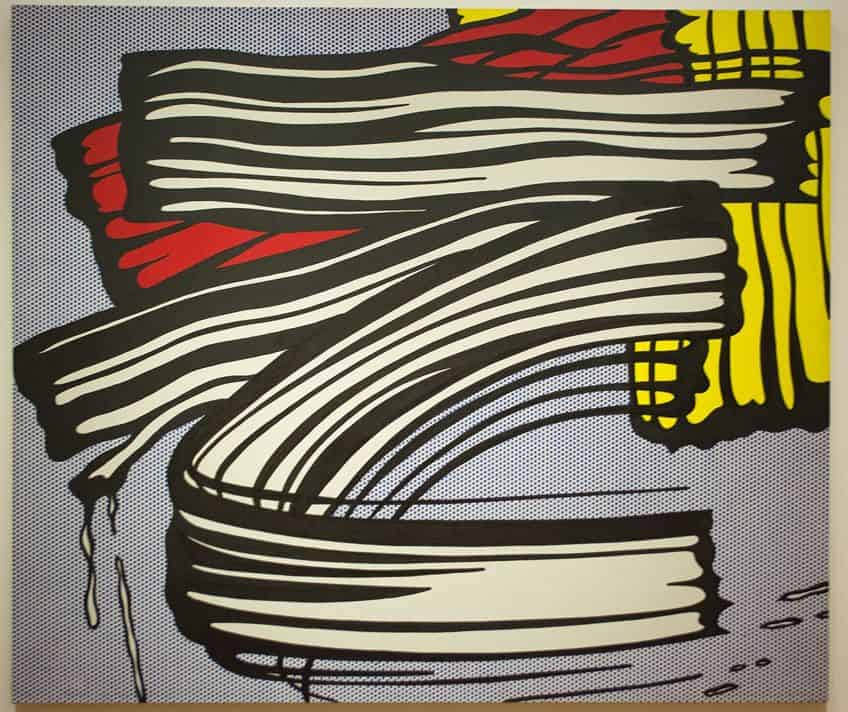
Fernando de Szyszlo (1925 – 2017)
| Artist Name | Fernando de Szyszlo Valdelomar |
| Date of Birth | 5 July 1925 |
| Date of Death | 9 October 2017 |
| Nationality | Peruvian |
| Associated Movements, Themes, and Styles | Abstract art, plastic art, pre-Columbian, Surrealism, Mysticism, and Contemporary art |
| Most Famous Artworks | ● Mar de Lurin (Rojo) (c. 1980 – 1990s) ● Mar de Lurin II (1985) ● Mesa Ritual (2012) |
Fernando de Szyszlo was a famous Peruvian printmaker, sculptor, and painter, whose work is recognized by his Surrealist and indigenous Mysticism-inspired themes. Szyszlo often incorporated pre-Columbian imagery into his art and traveled extensively in his early life, interacting with poets such as André Breton and Octavio Paz.
His works can be found in the collections of the Museo de Arte Contemporaneo Arequipa in Peru as well as the New York Museum of Modern Art.
Mar de Lurin (Rojo) (c. 1980 – 1990s)
| Date | c. 1980s – 1990s |
| Medium | Serigraph |
| Edition | 118/180 |
| Dimensions (cm) | 45.7 x 55 |
| Where It Is Housed | Inter-American Development Bank, Washington D. C., United States |
Mar de Lurin (Rojo) showcases the emotive interpretation of the Lurín Valley landscape and forms part of a series that Szyszlo worked on between the 1980s and 1990s. The serigraph is inspired by pre-Inca ritual lore and is based on a site, which held a shrine to an oracular deity called Pachacámac who was associated with earthquakes. Szyszlo presents an abstract expression of the sacred landscape through a layering of red monochrome hues coupled with shades of blue and brown and a single monolithic shape that honors the site’s archaeological history.
Andy Warhol (1928 – 1987)
| Artist Name | Andrew Warhola Junior |
| Date of Birth | 6 August 1928 |
| Date of Death | 22 February 1987 |
| Nationality | American |
| Associated Movements, Themes, and Styles | Pop art, Modern art, portraiture, and photography |
| Most Famous Artworks | ● Campbell’s Soup Cans (1962) ● Marilyn Diptych (1962) ● Chelsea Girls (1966) ● Exploding Plastic Inevitable (1966) |
Andy Warhol was among the best screen printing artists of the 20th century and is associated with being the face of silkscreen art itself during the Pop art movement of the 60s. Warhol explored his ideas through film, photography, and silkscreen printing while collaborating with many celebrities on silkscreen portraits. His most famous screen print paintings include Marilyn Diptych (1962) and Double Elvis (1963). Warhol first worked as a commercial illustrator and soon went on to make a name for himself as one of the most loved and controversial artists of his day. Today, the Pop artist’s screen prints are highly valued with his work fetching up to $195 million at auction.
If you hope to complete craft projects where you need paint that will work well for any number of surfaces, then craft paint is your go-to! The consistency is smooth, creamy, and easy to use.
Campbell’s Soup I (1968)
| Date | 1968 |
| Medium | Silkscreen print |
| Edition | 250 |
| Dimensions (cm) | 89.3 x 58.7 |
| Where It Is Housed | Museum Folkwang, Essen, Germany |
Campbell’s Soup I is a famous screen print painting from Warhol’s most famous series, Campbell’s Soup Cans, which Warhol first created in the early 1960s. Warhol produced the soup can series in three phases during his career, each following the initial series as a reference work. Warhol’s imposition of mechanization in his art practice was often misunderstood since his screen-printed artwork relied heavily on reproduction as a concept, which was interpreted as a threat to traditional art practices.

Bridget Louise Riley (1931 – Present)
| Artist Name | Bridget Louise Riley |
| Date of Birth | 24 April 1931 |
| Date of Death | Present |
| Nationality | English |
| Associated Movements, Themes, and Styles | Op art, geometric, Impressionism, figurative, and Pointillism |
| Most Famous Artworks | ● Carnival (2000) ● Large Fragment (2006) ● About Lilac (2007) ● Leap (2008) ● Bagatelle 3 (2015) |
Bridget Riley is one of the most famous screen printing artists of all time who is recognized for incorporating geometric shapes and employing George Seurat’s Pointillism technique in her artwork. Riley is also a dynamic arts writer and curator who worked on many profound projects, including the curation of large works by artists such as Titian, Rubens, and Cézanne in 2010 at the National Gallery for the artist’s choice show.
The 60s saw Riley begin her exploration of color as well as the introduction of her black-and-white and striped paintings.
Untitled (Wave) (Schubert 20) (1975)
| Date | 1975 |
| Medium | Silkscreen print |
| Edition | 233/400 |
| Dimensions (cm) | 42.86 x 47.78 |
| Where It Is Housed | Betchler Museum of Modern Art, Charlotte, North Carolina, United States |
This colorful Op art artwork by Riley is one of her most famous screen prints from the 20th century that was executed on wove paper and formed part of an edition of 400 prints. This work is an example of Riley’s exploration of color, geometric shape, and movement in the 1960s, which can also be seen in many of her canvas works.
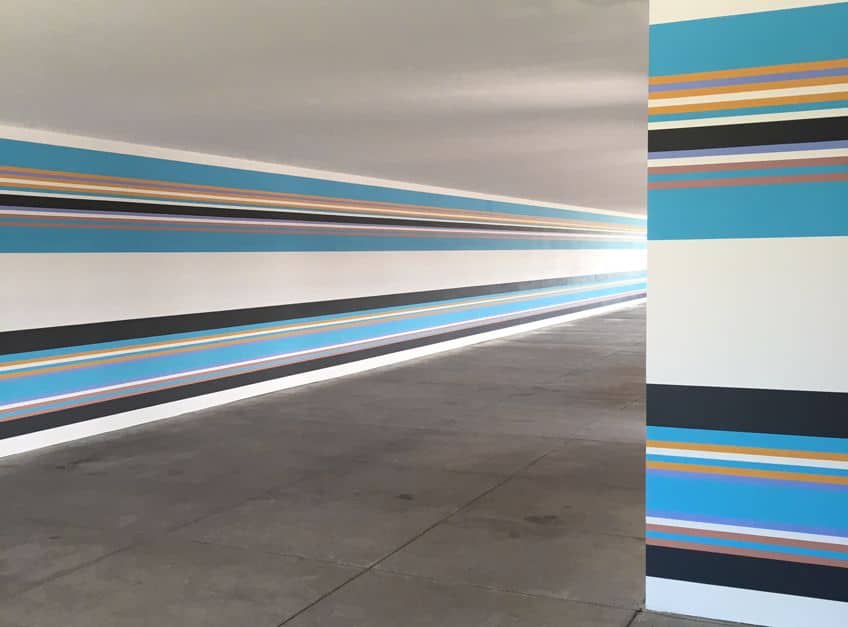
Peter Blake (1932 – Present)
| Artist Name | Sir Peter Thomas Blake |
| Date of Birth | 25 June 1932 – Present |
| Date of Death | Present |
| Nationality | English |
| Associated Movements, Themes, and Styles | Pop art, Modern art, and Contemporary art |
| Most Famous Artworks | ● The Toy Shop (1962) ● Illustration to the cover of Face Dances (1981) ● Homage to Schwitters (2005) ● Second Real Print Target (2009) ● I Love You (Diamond Dust) (2010) |
Sir Peter Blake is one of the most renowned English silkscreening artists in the world whose works traverse the fields of music, sports, and film. The multimedia artist is most famous for his cover design on The Beatles’ 1967 album Sergeant Pepper. Blake was also knighted for his contributions to the English art scene in 2002 and went on to create works inspired by beauty in the mundane as well as found materials.
Blake’s work evokes a sense of nostalgia for the 60s while combining a sense of child-like innocence to create reminiscent works of art.
Homage to Schwitters (2005)
| Date | 2005 |
| Medium | Silkscreen print; embossed somerset paper |
| Edition | 160/175 |
| Dimensions (cm) | 70 x 59.5 |
| Where It Is Housed | Phillips: Evening and Day Editions (auction closed June 2021) |
Homage to Schwitters is a collection of famous screen prints by Peter Blake that was created as a homage to the famous German Constructivist Kurt Schwitters. Schwitters was popular for his collage artworks and mixed media approach, the former of which is expressed through a collage aesthetic that Blake uses in his screenprint. The collection of prints in the series includes six multicolored collage artworks with gold and silver leaf on Somerset paper with embossing.
Gerhard Richter (1932 – Present)
| Artist Name | Gerhard Richter |
| Date of Birth | 9 February 1932 – Present |
| Date of Death | Present |
| Nationality | German |
| Associated Movements, Themes, and Styles | Photorealism, Abstraction, Capitalist Realism, Conceptual art, and Modern art |
| Most Famous Artworks | ● Airplane I (Flugzeug I) (1966) ● Telephone (Telefon) (1971) ● 31.12.04 (2004) ● Graphit (2005) ● Studie für ‘Graphit’ (13. Jan. 2005) (2005) |
Gerhard Richter is currently one of the art world’s leading artists whose works fetch up to $44.5 million at auction. Richter is a German visual artist who explored many mediums, including printmaking, screenprinting, lithography, photography, and painting.
He uses his art to address themes related to scientific phenomena, post-war Europe, abstraction, space, and found objects.
Flugzeug II (Airplane II) (1966)
| Date | 1966 |
| Medium | Screen print on paper |
| Dimensions (cm) | 61 x 86 |
| Where It Is Housed | Museum of Modern Art, New York City, United States |
Flugzeug II is a famous screen print artwork by Richter that speaks to the politics of World War II as seen through the imagery of the fighter planes. The planes are reminiscent of the bombings that took place in Dresden, Germany, which was also the artist’s hometown. The print also revolves around one of the dominant headlines floating in the 1960s media relating to German rearmament. The off-register aesthetic is characteristic of Richter’s screen-printing art and emphasizes the speed of the fighter planes.
Roger Shimomura (1939 – Present)
| Artist Name | Roger Yutaka Shimomura |
| Date of Birth | 26 June 1939 – Present |
| Date of Death | Present |
| Nationality | American |
| Associated Movements, Themes, and Styles | Pop art, popular culture, Modern art, Contemporary art, identity, social perception, and racial stereotypes |
| Most Famous Artworks | ● Oriental Masterprint – 24, from the series Oriental Masterprints (1975) ● Kabuki Party (1988) ● Kansas Samurai (2004) ● American Guardian (2007) |
Roger Shimomura is a famous Contemporary silkscreening artist whose works explore the politics of popular culture fused with well-known imagery that draw attention to Asian racial stereotypes and challenges viewers to examine such imagery in contrast to the imagery promoted in American popular culture.
Shimomura is a former professor from the University of Kansas whose art has been exhibited both locally in the United States and globally across Japan, Israel, and Canada.
Kabuki Party (1988)
| Date | 1988 |
| Medium | Screen print on paper |
| Dimensions (cm) | 30.48 x 60.96 |
| Where It Is Housed | The Nelson-Atkins Museum of Art, Kansas City, Missouri, United States |
Kabuki Party represents Shimomura’s exploration of the above-mentioned subject matter, which features a juxtaposition of a kabuki star with the image of Marilyn Monroe, as appropriated from Andy Warhol’s silkscreen portrait of Monroe. Shimomura also includes the recognizable stylized brushstrokes inspired by Roy Lichtenstein to create a dynamic fusion of imagery from the East contrasted by the heavily appropriated imagery from the West. The term “Kabuki” refers to a famous form of classical dance theater that dominated Tokyo, the former red-light district, throughout the 17th and 19th centuries.
Mikalojus Vilutis (1944 – Present)
| Artist Name | Mikalojus Povilas Vilutis |
| Date of Birth | 3 May 1944 – Present |
| Date of Death | Present |
| Nationality | Lithuanian |
| Associated Movements, Themes, and Styles | Graphic art and Contemporary art |
| Most Famous Artworks | ● Parachutist (1973) ● Red Dress (1974) ● Circus (1976) ● The King Ubas (1977) ● Aggression series (I, II, III) (1979) |
Mikalojus Povilas Vilutis is a Lithuanian graphic artist whose silkscreen artwork reflects his process and approach to color. Vilutis is celebrated as one of Lithuania’s leading figures in silkscreen printing who operates in multiple sectors, including book illustration and poster design for theater and exhibitions.
Vilutis’ artworks have been acquired by both private and international collectors.
Aggression series (1979)
| Date | 1979 |
| Medium | Silkscreen print |
| Edition | 4/30 |
| Dimensions (cm) | 39.5 x 32.5 |
| Where It Is Housed | MO Museum, Vilnius, Lithuania |
Vilutis’ Aggression series was created in 1979 and consists of three different silkscreen prints, each of which evokes a feeling of aggression through their visual compositions. The strong contrast of the red and black against the solid white background is what makes the series stay true to its concept. Vilutis makes use of an intuitive approach, which inspires a sense of freedom when working with a medium that is often categorized as industrial and mechanical.
Barbara Carrasco (1955 – Present)
| Artist Name | Barbara Carrasco |
| Date of Birth | 1955 – Present |
| Date of Death | Present |
| Nationality | Chicana |
| Associated Movements, Themes, and Styles | Modern art, Contemporary art, socio-political activism, race, sexuality, and gender |
| Most Famous Artworks | ● Self-Portrait (1984) ● Negativity Attracts (1990) ● Antonia (2005) |
Barbara Carrasco is a famous Los Angeles-based silkscreen artist, feminist, and socio-political activist whose works explore the complex intersections between race, gender, sexuality, and the prevalent cultural stereotypes that are connected to these themes.
Carrasco specializes in both large and small-scale detailed artworks and is renowned across the world for her important contribution to the current art discourse.
Dolores Huerta (1999)
| Date | 1999 |
| Medium | Screen print on paper |
| Dimensions (cm) | 77.5 x 55.9 |
| Where It Is Housed | Smithsonian’s National Portrait Gallery, Washington D. C., United States |
This famous silkscreen print was created by Carrasco in 1999 and features the prolific civil rights leader Dolores Huerta, who was also a mentor to Carrasco. The print was created as a tribute to Huerta and honors the Chicano and feminist movements by asserting the image of Huerta as a symbol of femme power.
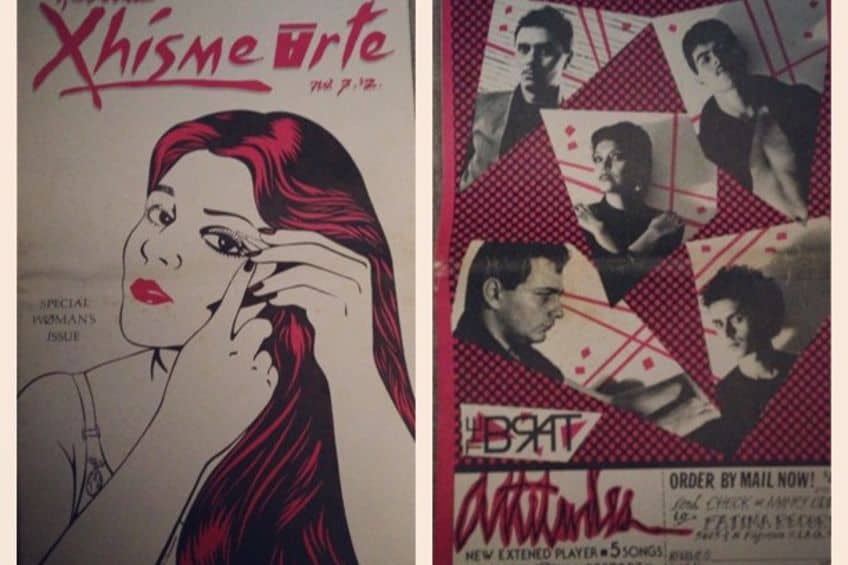
Silkscreen art is one of the best and quickest modes of production that can be both playful and profound. We hope that you have been inspired by the different visual aesthetics produced by these famous silkscreen artists and paintings whose screen printing examples provide room for critique and questioning around Contemporary politics and the present role of popular culture.
Frequently Asked Questions
What Is Screen Print Painting?
Screenprint painting is a printmaking technique that involves the use of a stencil and silk-mesh frame. The process of screen print painting involves forcing paint through the mesh screen onto the desired material or surface, such that the design from the mesh is transferred onto the material. The process is known as silkscreen printing or serigraphy.
What Is the Most Expensive Screen-Printed Artwork?
The most expensive screen-printed artwork is considered to be Shot Sage Blue Marilyn (1964), which sold for $195 million to a prominent art dealer based in the United States. The screen print painting was created by Andy Warhol two years after Marilyn Monroe’s death.
Who Is the Most Popular Screenprinting Artist?
Andy Warhol the most popular screen printing artist of the 20th century who operated during the Pop art movement in the 1960s. Andy Warhol was an American-based artist who created more than 10,000 artworks between the 1960s and 1980s.
Isabella studied at the University of Cape Town in South Africa and graduated with a Bachelor of Arts majoring in English Literature & Language and Psychology. Throughout her undergraduate years, she took Art History as an additional subject and absolutely loved it. Building on from her art history knowledge that began in high school, art has always been a particular area of fascination for her. From learning about artworks previously unknown to her, or sharpening her existing understanding of specific works, the ability to continue learning within this interesting sphere excites her greatly.
Her focal points of interest in art history encompass profiling specific artists and art movements, as it is these areas where she is able to really dig deep into the rich narrative of the art world. Additionally, she particularly enjoys exploring the different artistic styles of the 20th century, as well as the important impact that female artists have had on the development of art history.
Learn more about Isabella Meyer and the Art in Context Team.
Cite this Article
Isabella, Meyer, “Silkscreen Artists and Paintings – What Is Silkscreen Art?.” Art in Context. June 8, 2023. URL: https://artincontext.org/silkscreen-artists-and-paintings/
Meyer, I. (2023, 8 June). Silkscreen Artists and Paintings – What Is Silkscreen Art?. Art in Context. https://artincontext.org/silkscreen-artists-and-paintings/
Meyer, Isabella. “Silkscreen Artists and Paintings – What Is Silkscreen Art?.” Art in Context, June 8, 2023. https://artincontext.org/silkscreen-artists-and-paintings/.


